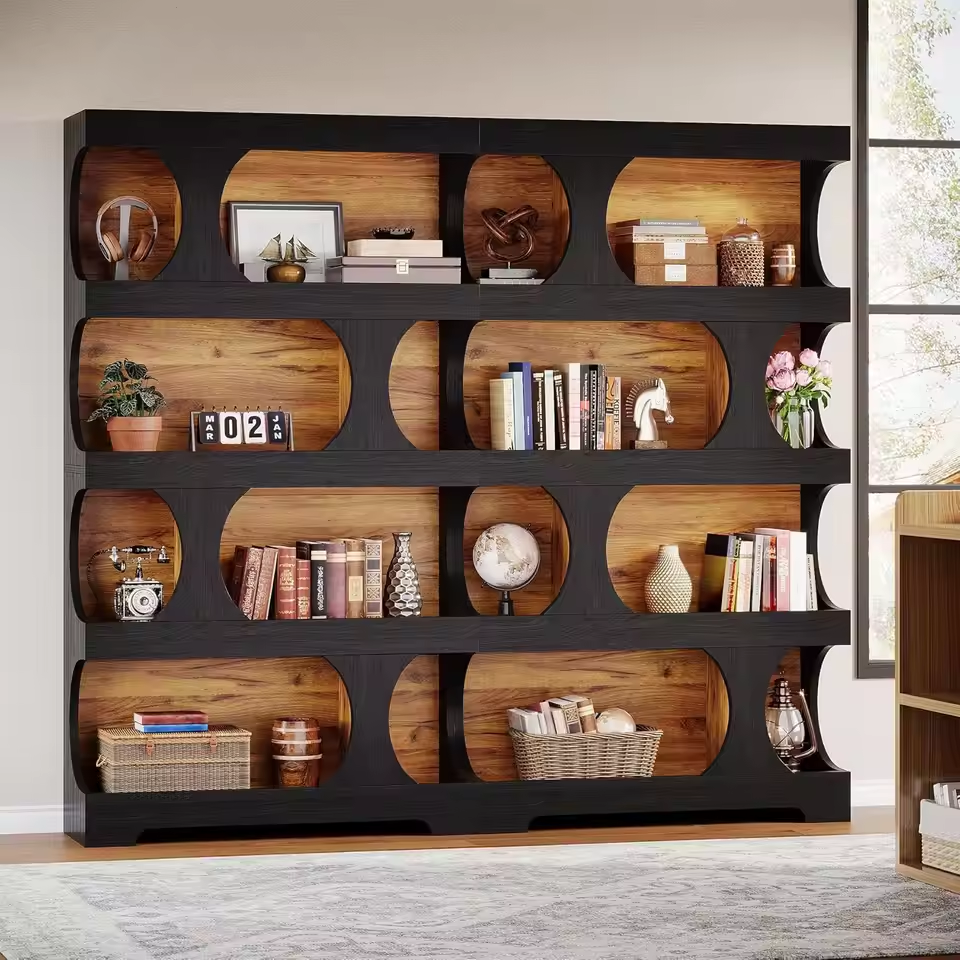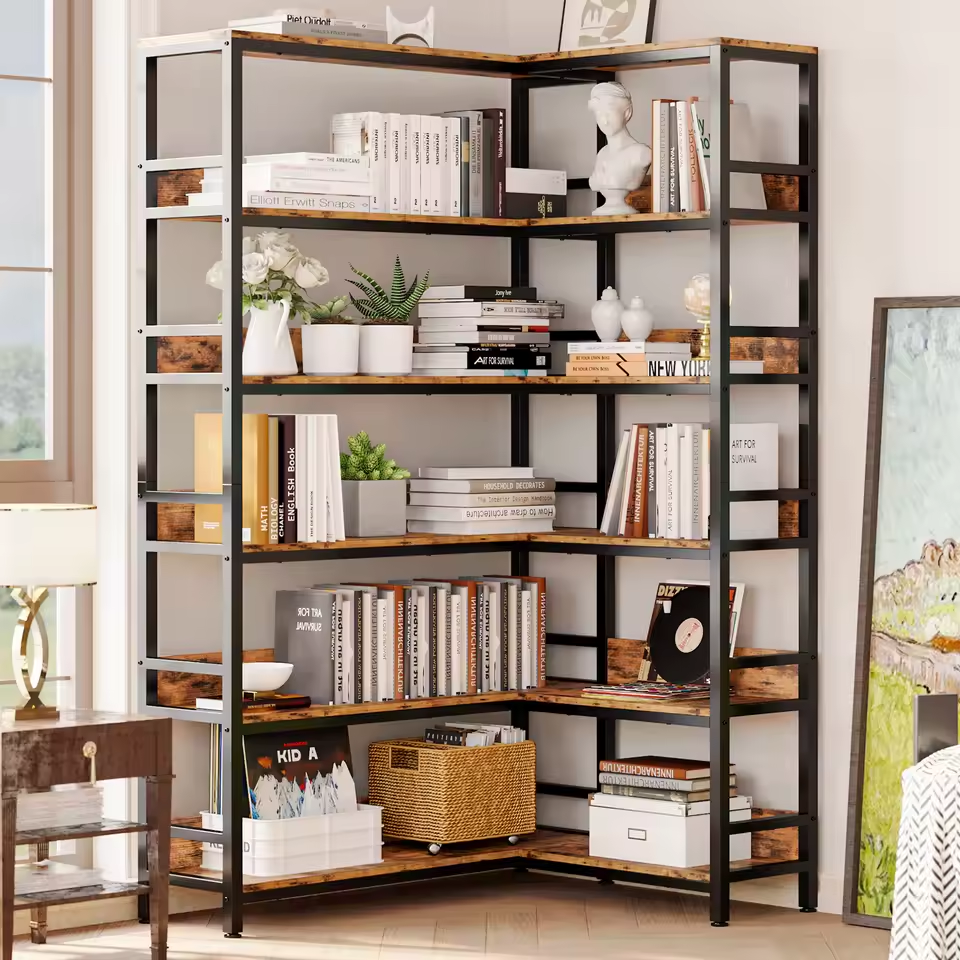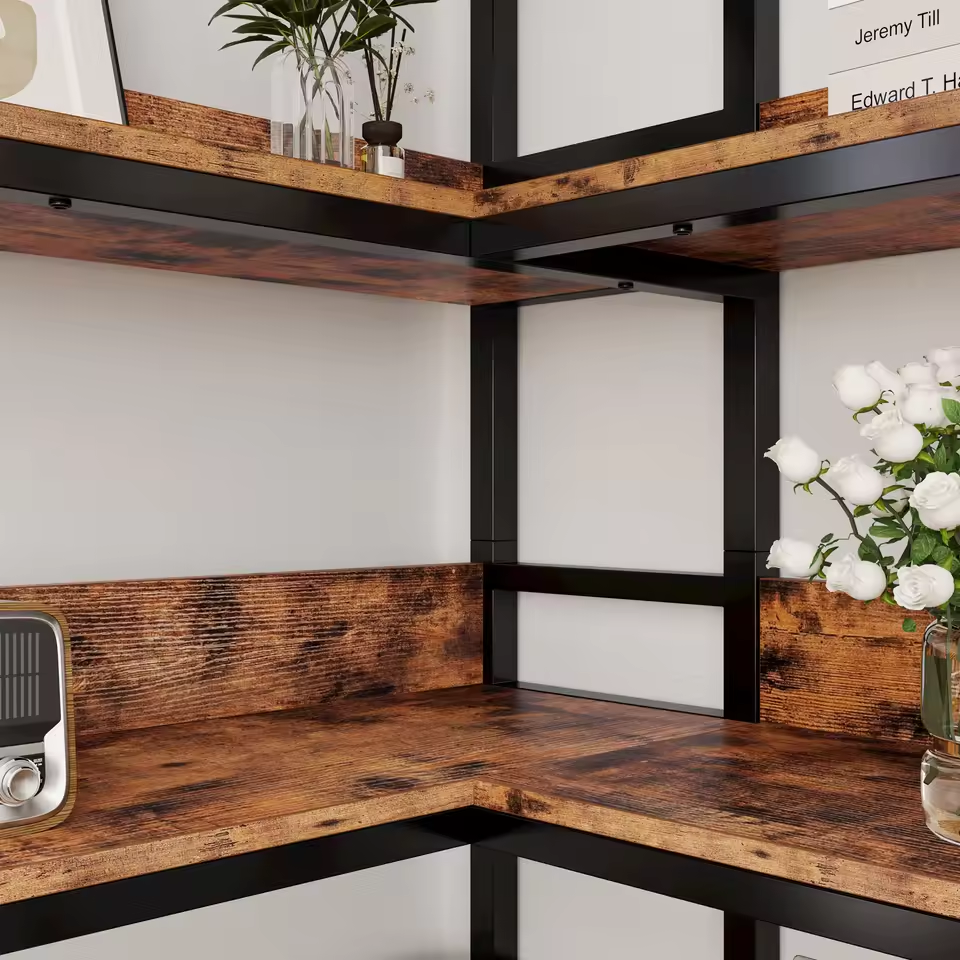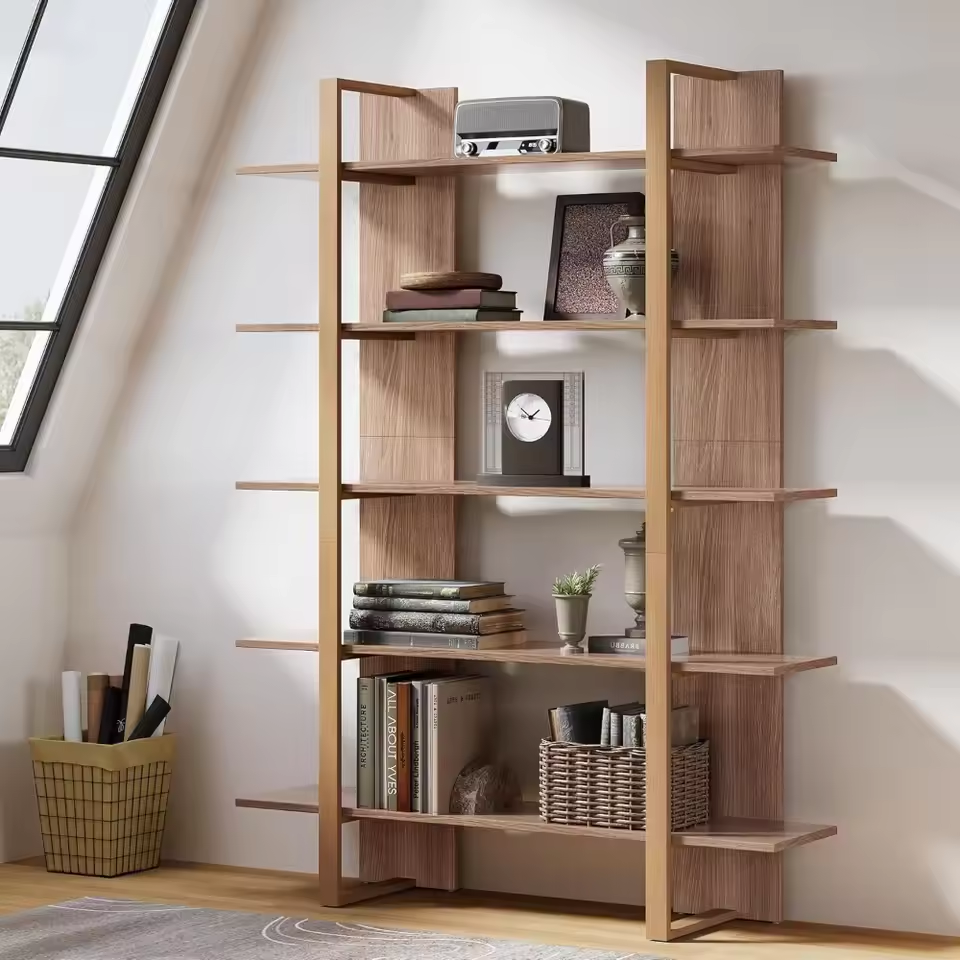Introduction to Floor to Ceiling Bookshelves
Floor to ceiling bookshelves redefine storage and aesthetics by spanning from the floor to the ceiling, turning walls into functional art. These structures maximize vertical space, ideal for homeowners seeking to organize books, decor, and electronics while creating bold visual statements.
Their appeal lies in versatility:
- Space Efficiency: Perfect for small apartments, they free floor space for furniture.
- Customization: Choose from wood, metal, or glass; add LED lighting or hidden cabinets.
- Design Flexibility: Narrow bookshelves fit tight spaces, while modular systems adapt to evolving collections.
Modern designs go beyond storage—some integrate desk nooks or room dividers. For instance, a floor to ceiling bookshelf with glass doors blends privacy and style in open-plan homes.
Whether you’re building a home library or optimizing office space, these systems offer unmatched storage density and aesthetic impact. With proper planning, they become central features that reflect your personality while maximizing utility. Start designing your floor to ceiling bookshelves today to transform walls into dynamic spaces.
Benefits of Vertical Storage Solutions
Vertical storage solutions like floor to ceiling bookshelves offer unmatched advantages for modern living spaces:
1. Space Optimization:
By utilizing vertical walls, these systems free up floor space for furniture or movement. In small apartments, a floor to ceiling bookshelf can replace multiple standalone units while holding twice the items.
2. Aesthetic Impact:
They transform walls into dynamic focal points. Sleek wood finishes, industrial metal accents, or narrow bookshelves create tailored looks—from minimalist libraries to eclectic galleries.
3. Customization:
- Material Choices: Wood, glass, or metal adapts to your style.
- Functionality: Add LED lighting, hidden cabinets, or pull-out drawers.
- Modular Design: Adjustable shelves expand with your collection.
4. Multi-Purpose Use:
Beyond books, they store decor, electronics, or seasonal items. A floor to ceiling bookshelf with glass doors keeps media equipment hidden while showcasing art or collectibles.
5. Cost Efficiency:
Replace multiple small shelves with one cohesive unit, reducing furniture costs. Over time, they add resale value to homes by enhancing storage and design.
6. Organization:
- Zone shelves by category (e.g., books, plants, photos).
- Use baskets or dividers for small items.
Example: In a studio apartment, a floor to ceiling bookshelf with desk nooks creates a home office and library in one, ideal for remote workers.
7. Versatility:
- Narrow variants fit tight spaces.
- Corner units maximize underused angles.
These solutions aren’t just practical—they’re design statements. Whether you’re optimizing a small home or styling a luxury space, vertical storage like floor to ceiling bookshelves offers flexibility, beauty, and efficiency that redefines how we use walls.
Designing Your Ideal Bookshelf System
Crafting the perfect floor to ceiling bookshelves requires balancing aesthetics, functionality, and space. Follow these steps:
1. Measure Your Space:
- Note wall dimensions, doorways, and ceiling height.
- Ensure clearance for doors or windows.
2. Define Functionality:
- Storage-Heavy: Add hidden cabinets or narrow bookshelves for vertical stacking.
- Display-Driven: Use open shelves for art, plants, or collectibles.
- Hybrid: Combine storage with desk nooks or charging stations.
3. Material Selection:
- Wood (pine, oak) for warmth.
- Metal frames for industrial flair.
- Glass panels for transparency.
4. Customization Options:
- Lighting: Install LED strips under shelves.
- Adjustable Shelves: Choose modular systems for flexibility.
- Hidden Storage: Add drawers or pull-out trays.
5. Style Alignment:
- Modern Minimalism: Sleek lines, monochromatic finishes.
- Eclectic Mix: Combine wood, metal, and glass.
Example: A floor to ceiling bookshelf with narrow bookshelves on one side and wide, glass-fronted units on the other caters to both books and display items.
Pro Tip: Leave 2–3 inches between the top shelf and ceiling for a polished look.
By prioritizing your needs and aesthetic goals, you’ll design a floor to ceiling bookshelf system that evolves with your lifestyle while enhancing your space’s functionality and beauty.
Customization Options for Wall-to-Wall Bookshelves
Floor to ceiling bookshelves offer endless customization to match your lifestyle and style. Explore these tailored options:
1. Material Choices:
- Wood: Warmth with oak or rustic pine.
- Metal: Industrial accents with iron or steel frames.
- Glass: Transparent shelves for a modern look.
2. Functional Additions:
- LED Lighting: Under-shelf strips highlight displayed items.
- Hidden Storage: Add pull-out drawers or sliding cabinets.
- Desk Nooks: Integrate a workspace into the design.
3. Shape and Size:
- Narrow bookshelves: Ideal for tight spaces or hallway walls.
- Curved Designs: Soften sharp angles with rounded corners.
- Corner Units: Maximize L-shaped walls with angled shelves.
4. Aesthetic Enhancements:
- Painted Finishes: Bold colors (e.g., navy or sage green) for statement walls.
- Reclaimed Wood: Vintage appeal with textured surfaces.
5. Smart Integration:
- Install charging ports behind shelves for devices.
- Mount TVs or shelves with adjustable heights.
Example: A floor to ceiling bookshelf with narrow bookshelves on one side and a glass-fronted TV niche on the other creates a multifunctional media wall.
Pro Tip: Add felt pads to shelf edges to protect displayed items.
By choosing these customization options, your floor to ceiling bookshelves become a unique solution that adapts to your needs while elevating your space’s design.
Installation Guide: Tips for Seamless Setup
Installing floor to ceiling bookshelves requires careful planning for a professional result. Follow these steps for a smooth process:
1. Wall Preparation:
- Measure Dimensions: Note wall height, width, and door/window placements.
- Locate Studs: Use a stud finder to ensure brackets attach securely.
- Weight Capacity: Confirm walls can support the load (typically 10–15 lbs per square foot).
2. Choose Fixtures:
- Use heavy-duty screws (3–4 inches) for drywall or non-load-bearing walls.
- Opt for anti-tip kits to prevent toppling.
3. Assembly Steps:
- Base Setup: Mount bottom brackets first, using a level.
- Shelf Placement: Install shelves from the bottom up for stability.
- Narrow bookshelves: Pre-measure gaps to avoid misalignment.
4. Safety Checks:
- Test weight distribution by placing heavy items centrally.
- Tighten all screws annually to prevent loosening.
5. Final Adjustments:
- Fill gaps with trim molding for a polished look.
- Add LED strips under shelves for ambiance.
Example: For a floor to ceiling bookshelf in a corner, use L-shaped brackets to maximize space while ensuring structural integrity.
Tools Needed:
- Drill and screwdriver.
- Leveler and stud finder.
- Measuring tape.
Pro Tips:
- Assemble shelves on the floor before mounting.
- Consult contractors for non-standard installations.
A well-executed setup ensures your floor to ceiling bookshelves become a safe, durable feature. Prioritize precision during installation to enjoy years of functional and aesthetic value.
Maintenance and Care Tips
Proper care ensures floor to ceiling bookshelves remain functional and visually appealing for years. Follow these steps:
1. Regular Cleaning:
- Dust weekly with a microfiber cloth or soft brush.
- For wood, use a damp cloth and mild cleaner (avoid excessive moisture).
- Wipe glass shelves with glass cleaner for clarity.
2. Weight Management:
- Distribute items evenly to avoid overloading single shelves.
- Heavier items (books, decor) belong on lower shelves to prevent sagging.
3. Structural Checks:
- Tighten screws annually using a screwdriver.
- Inspect brackets for wear, especially on narrow bookshelves prone to stress.
4. Environmental Protection:
- Avoid direct sunlight to prevent wood fading or warping.
- Keep away from steam or moisture sources (e.g., bathrooms).
5. Damage Repair:
- Fill small scratches with wood filler or paint.
- Replace cracked glass or warped shelves promptly.
6. Seasonal Adjustments:
- Rotate displayed items periodically to reduce uneven wear.
- Store seasonal decor in hidden cabinets to maintain a tidy look.
Pro Tips:
- Lubricate moving parts (e.g., sliding doors) with silicone spray.
- Add felt pads under heavy items to protect surfaces.
For example, a floor to ceiling bookshelf with narrow bookshelves requires extra attention to alignment—adjust shelves if gaps appear.
By prioritizing maintenance, you ensure your investment stays both functional and stylish. Regular care prevents costly repairs and extends the lifespan of your vertical storage system.
Styling Your Floor to Ceiling Bookshelves
Transform your floor to ceiling bookshelves into a design masterpiece with these styling ideas:
1. Color Coordination:
- Match wood tones to room decor (e.g., oak with neutral walls).
- Paint shelves in bold hues (like navy or emerald) for a statement wall.
2. Layered Display:
- Mix books, plants, art, and decor for visual interest.
- Group items by height: tall vases at the back, small trinkets upfront.
3. Lighting Integration:
- Add LED strip lights under shelves for ambient glow.
- Place floor lamps near open sections to highlight displayed items.
4. Functional Zones:
- Reserve lower shelves for frequently used items (e.g., board games).
- Use upper shelves for seasonal decor or out-of-season books.
5. Texture Play:
- Combine smooth wood with woven baskets or metallic accents.
- Add greenery: trailing plants like pothos cascade between books.
6. Art and Accessories:
- Frame photos or hang canvases between shelves.
- Use glass-fronted sections to showcase delicate items (e.g., porcelain).
Example: On a narrow bookshelves unit, alternate books with vertical succulents to create a balanced look.
Pro Tips:
- Rotate displays seasonally to refresh ambiance.
- Leave some space empty for a clean, curated feel.
A well-styled floor to ceiling bookshelf becomes a room’s centerpiece—combining personal expression with practicality. Experiment with these ideas to turn storage into art.
Conclusion: Elevate Your Space with Vertical Storage
Floor to ceiling bookshelves are more than storage—they’re transformative tools that merge functionality with design. By spanning walls from floor to ceiling, they maximize vertical space, turning underused walls into focal points that organize books, decor, and even electronics.
Their adaptability shines in small spaces: a narrow bookshelves variant fits tight corners, while modular systems grow with your collection. From minimalist wood finishes to industrial metal accents, these structures cater to every aesthetic, proving that practicality and style aren’t mutually exclusive.
Investing in vertical storage isn’t just about organization—it’s an opportunity to elevate your home’s ambiance. A well-designed floor to ceiling bookshelves system becomes a timeless feature that enhances both utility and beauty.
Whether you’re a book lover or a small-space dweller, these shelves offer a versatile solution that optimizes every inch of your home. Start designing your vertical storage system today and watch your walls come alive with purpose and personality.